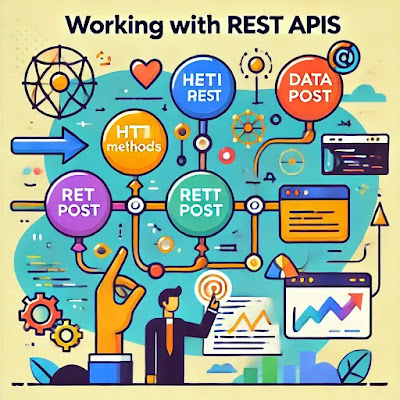JavaScript Promises: Handling Asynchronous Operations
JavaScript Promises: Handling Asynchronous Operations
Asynchronous programming is an essential part of modern JavaScript development, enabling you to perform tasks such as fetching data from an API, reading files, or waiting for user input without blocking the main thread. JavaScript Promises are a powerful tool for handling these asynchronous operations in a clean and organized way.
In this article, we’ll dive into the fundamentals of JavaScript Promises, explore how they work, and see how the async/await syntax simplifies asynchronous code. Whether you’re new to Promises or looking to sharpen your understanding, this guide will cover everything you need to know.
What Is a Promise in JavaScript?
A Promise in JavaScript is an object representing the eventual completion (or failure) of an asynchronous operation. Think of a Promise as a placeholder for a future value that may be available later. Promises have three possible states:
- Pending: The initial state—neither fulfilled nor rejected.
- Fulfilled: The operation completed successfully, and the Promise has a resolved value.
- Rejected: The operation failed, and the Promise has a reason for failure (an error).
Promises allow you to handle asynchronous operations in a structured way, providing cleaner code compared to traditional callback functions.
Creating a Promise
To create a Promise, you use the new Promise() constructor, passing in a function with two parameters: resolve and reject. Here’s an example:
const myPromise = new Promise((resolve, reject) => {
let success = true; // Simulating a condition
if (success) {
resolve("The operation was successful!");
} else {
reject("The operation failed.");
}
});
In this example, we create a new Promise that either resolves with a success message or rejects with a failure message based on a condition. Now, let’s see how to handle these outcomes.
Handling Promises with then() and catch()
Once a Promise is created, you can handle the result using the then() method for resolved Promises and the catch() method for rejected Promises.
myPromise
.then((message) => {
console.log(message); // Logs: "The operation was successful!"
})
.catch((error) => {
console.log(error); // Logs: "The operation failed." (if rejected)
});
In this example, then() is called when the Promise resolves successfully, while catch() is used to handle errors or rejections.
Chaining Promises
One of the powerful features of Promises is their ability to chain operations. This means you can perform a sequence of asynchronous tasks, with each step waiting for the previous one to complete before proceeding.
new Promise((resolve, reject) => {
setTimeout(() => resolve(10), 1000); // Resolve with 10 after 1 second
})
.then((result) => {
console.log(result); // Logs: 10
return result * 2; // Multiply result by 2
})
.then((result) => {
console.log(result); // Logs: 20
return result + 5; // Add 5 to result
})
.then((result) => {
console.log(result); // Logs: 25
})
.catch((error) => {
console.log(error); // Handle any errors
});
In this example, each then() block receives the result from the previous step, performs an operation, and passes the result to the next step.
Using Promise.all() for Concurrent Operations
Sometimes, you need to run multiple asynchronous operations at the same time and wait for all of them to complete. The Promise.all() method takes an array of Promises and resolves when all Promises in the array are fulfilled.
const promise1 = Promise.resolve(10);
const promise2 = Promise.resolve(20);
const promise3 = Promise.resolve(30);
Promise.all([promise1, promise2, promise3])
.then((results) => {
console.log(results); // Logs: [10, 20, 30]
})
.catch((error) => {
console.log(error); // Handle any errors
});
In this example, Promise.all() waits for all three Promises to resolve and then logs an array of results. If any of the Promises reject, the entire Promise.all() operation will fail and jump to the catch() block.
Async/Await: Simplifying Promise Syntax
While then() and catch() provide a clean way to handle Promises, JavaScript’s async/await syntax simplifies working with Promises by making asynchronous code look and behave more like synchronous code.
The async keyword is used to define a function that returns a Promise, and the await keyword pauses the execution of the function until the Promise is resolved.
1. Using async and await
async function fetchData() {
try {
let result = await new Promise((resolve, reject) => {
setTimeout(() => resolve("Data fetched!"), 1000);
});
console.log(result); // Logs: "Data fetched!"
} catch (error) {
console.log(error);
}
}
fetchData();
In this example, await pauses the fetchData() function until the Promise resolves. If an error occurs, the try/catch block handles it.
2. Multiple await Statements
When working with multiple asynchronous operations, you can use multiple await statements to wait for each operation to complete in sequence:
async function processNumbers() {
let num1 = await Promise.resolve(10);
let num2 = await Promise.resolve(20);
let num3 = await Promise.resolve(30);
console.log(num1 + num2 + num3); // Logs: 60
}
processNumbers();
This example demonstrates how you can use await to handle multiple asynchronous tasks one after the other.
Best Practices for Using Promises
- Use
catch()ortry/catchfor Error Handling: Always handle errors to prevent your application from failing silently when a Promise rejects. - Use
Promise.all()for Concurrent Operations: When running multiple asynchronous tasks, usePromise.all()to ensure they all complete before proceeding. - Prefer
async/awaitfor Cleaner Code: Useasync/awaitto make your asynchronous code easier to read and maintain. - Avoid Callback Hell: Promises and
async/awaithelp you avoid deeply nested callback structures, making your code more modular and readable.
Conclusion
JavaScript Promises are a powerful way to handle asynchronous operations, offering a clean and structured alternative to traditional callbacks. By understanding how to use Promises, then(), catch(), and async/await, you can write more efficient and readable code for dealing with asynchronous tasks.
With these tools in your arsenal, you’ll be better equipped to handle everything from API requests to file operations, making your JavaScript applications more robust and user-friendly.



Comments
Post a Comment